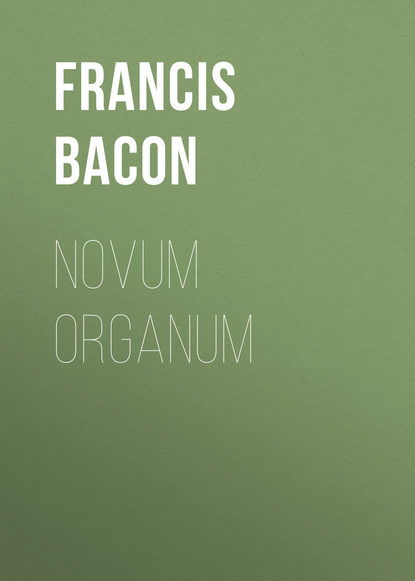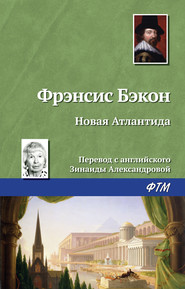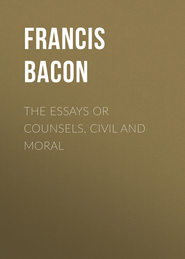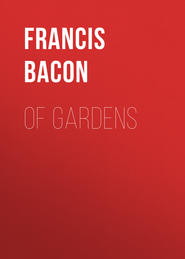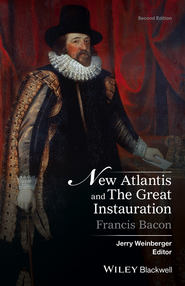По всем вопросам обращайтесь на: info@litportal.ru
(©) 2003-2024.
✖
Novum Organum
Настройки чтения
Размер шрифта
Высота строк
Поля
125
Seneca was a sounder astronomer than Bacon. He ridiculed the idea of the motion of any heavenly bodies being irregular, and predicted that the day would come, when the laws which guided the revolution of these bodies would be proved to be identical with those which controlled the motions of the planets. The anticipation, was realized by Newton. —Ed.
126
But see Bacon’s own corollary at the end of the Instances of Divorce, Aphorism xxxvii (#Page_210). If Bacon’s remark be accepted, the censure will fall upon Newton and the system so generally received at the present day. It is, however, unjust, as the centre of which Newton so often speaks is not a point with an active inherent force, but only the result of all the particular and reciprocal attractions of the different parts of the planet acting upon one spot. It is evident, that if all these forces were united in this centre, that the sum would be equal to all their partial effects. —Ed.
127
Since Newton’s discovery of the law of gravitation, we find that the attractive force of the earth must extend to an infinite distance. Bacon himself alludes to the operation of this attractive force at great distances in the Instances of the Rod, Aphorism xlv (#Book_II_Aph_15).
128
Snow reflects light, but is not a source of light.
129
Bacon’s sagacity here foreshadows Newton’s theory of the tides.
130
The error in the text arose from Bacon’s impression that the earth was immovable. It is evident, since gravitation acts at an infinite distance, that no such point could be found; and even supposing the impossible point of equilibrium discovered, the body could not maintain its position an instant, but would be hurried, at the first movement of the heavenly bodies, in the direction of the dominant gravitating power. —Ed.
131
Fly clocks are referred to in the text, not pendulum clocks, which were not known in England till 1662. The former, though clumsy and rude in their construction, still embodied sound mechanical principles. The comparison of the effect of a spring with that of a weight in producing certain motions in certain times on altitudes and in mines, has recently been tried by Professors Airy and Whewell in Dalcoath mine, by means of a pendulum, which is only a weight moved by gravity, and a chronometer balance moved and regulated by a spring. In his thirty-seventh Aphorism (#Page_210), Bacon also speaks of gravity as an incorporeal power, acting at a distance, and requiring time for its transmission; a consideration which occurred at a later period to Laplace in one of his most delicate investigations.
Crucial instances, as Herschel remarks, afford the readiest and securest means of eliminating extraneous causes, and deciding between the claims of rival hypotheses; especially when these, running parallel to each other, in the explanation of great classes of phenomena, at length come to be placed at issue upon a single fact. A curious example is given by M. Fresnel, as decisive in his mind of the question between the two great theories on the nature of light, which, since the time of Newton and Huyghens, have divided philosophers. When two very clean glasses are laid one on the other, if they be not perfectly flat, but one or both, in an almost imperceptible degree, convex or prominent, beautiful and vivid colors will be seen between them; and if these be viewed through a red glass, their appearance will be that of alternate dark and bright stripes. These stripes are formed between the two surfaces in apparent contact, and being applicable on both theories, are appealed to by their respective supporters as strong confirmatory facts; but there is a difference in one circumstance, according as one or other theory is employed to explain them. In the case of the Huyghenian theory, the intervals between the bright stripes ought to appear absolutely black, when a prism is used for the upper glass, in the other half bright. This curious case of difference was tried, as soon as the opposing consequences of the two theories were noted by M. Fresnel, and the result is stated by him to be decisive in favor of that theory which makes light to consist in the vibrations of an elastic medium. —Ed.
132
Bacon plainly, from this passage, was inclined to believe that the moon, like the comets, was nothing more than illuminated vapor. The Newtonian law, however, has not only established its solidity, but its density and weight. A sufficient proof of the former is afforded by the attraction of the sea, and the moon’s motion round the earth. —Ed.
133
Rather the refraction; the sky or air, however, reflects the blue rays of light.
134
The polished surface of the glass causes the reflection in this case, and not the air; and a hat or other black surface put behind the window in the daytime will enable the glass to reflect distinctly for the same reason, namely, that the reflected rays are not mixed and confused with those transmitted from the other side of the window.
135
These instances, which Bacon seems to consider as a great discovery, are nothing more than disjunctive propositions combined with dilemmas. In proposing to explain an effect, we commence with the enumeration of the different causes which seem connected with its production; then with the aid of one or more dilemmas, we eliminate each of the phenomena accidental to its composition, and conclude with attributing the effect to the residue. For instance, a certain phenomenon (a) is produced either by phenomenon (B) or phenomenon (C); but C cannot be the cause of a, for it is found in D, E, F, neither of which are connected with a. Then the true cause of phenomenon (a) must be phenomenon (B).
This species of reasoning is liable to several paralogisms, against which Bacon has not guarded his readers, from the very fact that he stumbled into them unwittingly himself. The two principal ones are false exclusions and defective enumerations. Bacon, in his survey of the causes which are able to concur in producing the phenomena of the tides, takes no account of the periodic melting of the Polar ice, or the expansion of water by the solar heat; nor does he fare better in his exclusions. For the attraction of the planets and the progression and retrograde motion communicated by the earth’s diurnal revolution, can plainly affect the sea together, and have a simultaneous influence on its surface.
Bacon is hardly just or consistent in his censure of Ramus; the end of whose dichotomy was only to render reasoning by dilemma, and crucial instances, more certain in their results, by reducing the divisions which composed their parts to two sets of contradictory propositions. The affirmative or negative of one would then necessarily have led to the acceptance or rejection of the other. —Ed.
136
Père Shenier first pointed out the spots on the sun’s disk, and by the marks which they afforded him, computed its revolution to be performed in twenty-five days and some hours. —Ed.
137
Rust is now well known to be a chemical combination of oxygen with the metal, and the metal when rusty acquires additional weight. His theory as to the generation of animals, is deduced from the erroneous notion of the possibility of spontaneous generation (as it was termed). See the next paragraph but one.
138
“Limus ut hic durescit, et hæc ut cera liquescit
Uno eodemque igni.” – Virg. Ecl. viii.
139
See Table of Degrees, No. 38 (#Tab_3_Inst_38).
140
Riccati, and all modern physicists, discover some portion of light in every body, which seems to confirm the passage in Genesis that assigns to this substance priority in creation. —Ed.
141
As instances of this kind, which the progress of science since the time of Bacon affords, we may cite the air-pump and the barometer, for manifesting the weight and elasticity of air: the measurement of the velocity of light, by means of the occultation of Jupiter’s satellites and the aberration of the fixed stars: the experiments in electricity and galvanism, and in the greater part of pneumatic chemistry. In all these cases scientific facts are elicited, which sense could never have revealed to us. —Ed.
142
The itinerant instances, as well as frontier instances, are cases in which we are enabled to trace the general law of continuity which seems to pervade all nature, and which has been aptly embodied in the sentence, “natura non agit per saltum.” The pursuit of this law into phenomena where its application is not at first sight obvious, has opened a mine of physical discovery, and led us to perceive an intimate connection between facts which at first seemed hostile to each other. For example, the transparency of gold-leaf, which permits a bluish-green light to pass through it, is a frontier instance between transparent and opaque bodies, by exhibiting a body of the glass generally regarded the most opaque in nature, as still possessed of some slight degree of transparency. It thus proves that the quality of opacity is not a contrary or antagonistic quality to that of transparency, but only its extreme lowest degree.
143
Alluding to his theory of atoms.
144
Observe the approximation to Newton’s theory. The same notion repeated still more clearly in the ninth motion. Newton believed that the planets might so conspire as to derange the earth’s annual revolution, and to elongate the line of the apsides and ellipsis that the earth describes in its annual revolution round the sun. In the supposition that all the planets meet on the same straight line, Venus and Mercury on one side of the sun, and the earth, moon, Mars, Jupiter and Saturn on the side diametrically opposite; then Saturn would attract Jupiter, Jupiter Mars, Mars the moon, which must in its turn attract the earth in proportion to the force with which it was drawn out of its orbit. The result of this combined action on our planet would elongate its ecliptic orbit, and so far draw it from the source of heat, as to produce an intensity of cold destructive to animal life. But this movement would immediately cease with the planetary concurrence which produced it, and the earth, like a compressed spring, bound almost as near to the sun as she had been drawn from it, the reaction of the heat on its surface being about as intense as the cold caused by the first removal was severe. The earth, until it gained its regular track, would thus alternately vibrate between each side of its orbit, with successive changes in its atmosphere, proportional to the square of the variation of its distance from the sun. In no place is Bacon’s genius more conspicuous than in these repeated guesses at truth. He would have been a strong Copernican, had not Gilbert defended the system. —Ed.
145
This is not true except when the projectile acquires greater velocity at every successive instant of its course, which is never the case except with falling bodies. Bacon appears to have been led into the opinion from observing that gunshots pierce many objects at a distance from which they rebound when brought within a certain proximity of contact. This apparent inconsistency, however, arises from the resistance of the parts of the object, which velocity combined with force is necessary to overcome. —Ed.
146
This passage shows that the pressure of the external atmosphere, which forces the water into the egg, was not in Bacon’s time understood. —Ed.
147
We have already alluded, in a note prefixed to the same aphorism of the first book, to Newton’s error of the absolute lightness of bodies. In speaking again of the volatile or spiritual substances (Aph. xl. b. ii. (#Book_II_Aph_40)) which he supposed with the Platonists and some of the schoolmen to enter into the composition of every body, he ascribes to them a power of lessening the weight of the material coating in which he supposes them inclosed. It would appear from these passages and the text that Bacon had no idea of the relative density of bodies, and the capability which some have to diminish the specific gravity of the heavier substances by the dilation of their parts; or if he had, the reveries in which Aristotle indulged in treating of the soul, about the appetency of bodies to fly to kindred substances – flame and spirit to the sky, and solid opaque substances to the earth, must have vitiated his mind. —Ed.





